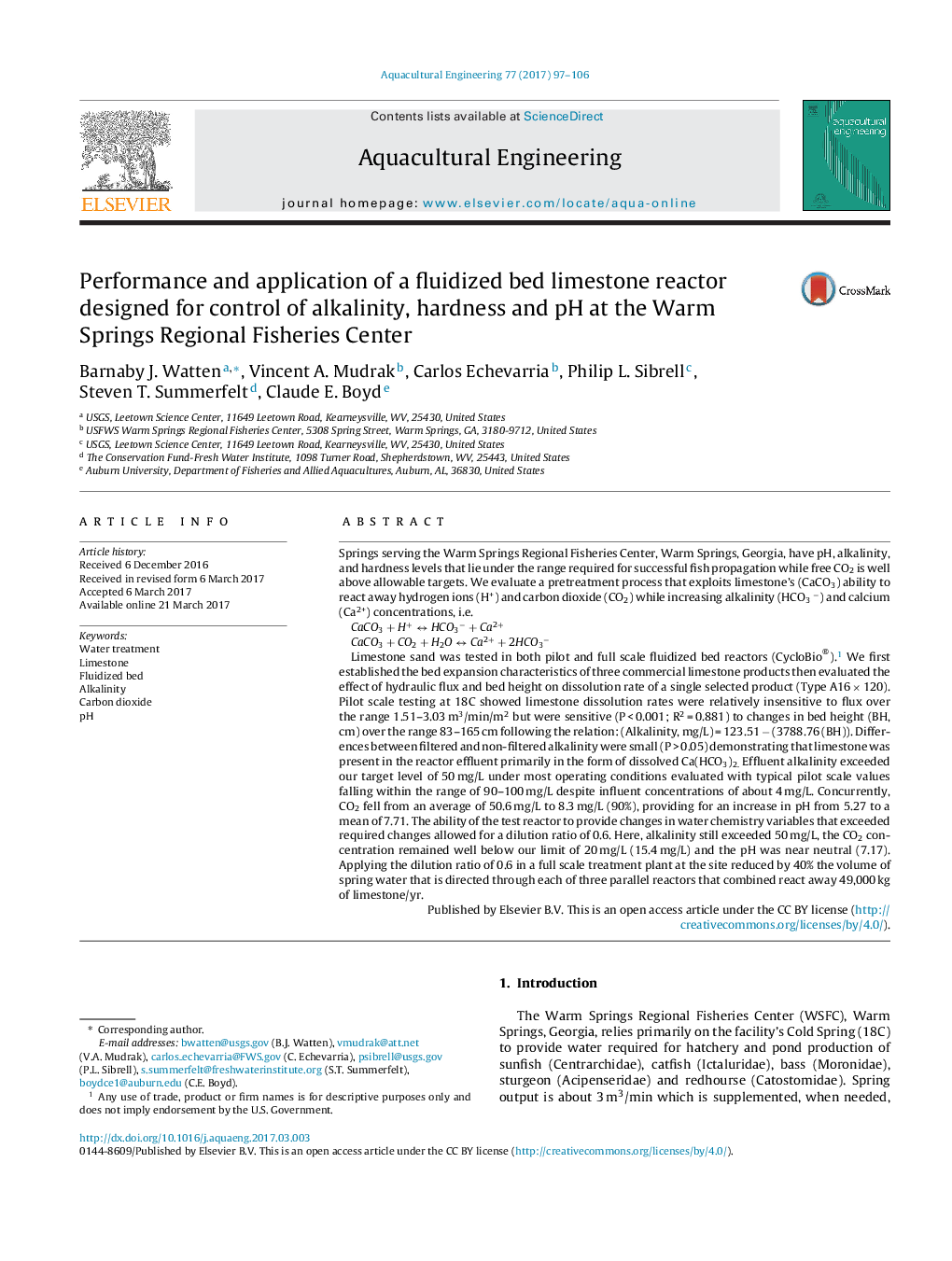| Article ID | Journal | Published Year | Pages | File Type |
|---|---|---|---|---|
| 5763946 | Aquacultural Engineering | 2017 | 10 Pages |
Abstract
Limestone sand was tested in both pilot and full scale fluidized bed reactors (CycloBio®).1 We first established the bed expansion characteristics of three commercial limestone products then evaluated the effect of hydraulic flux and bed height on dissolution rate of a single selected product (Type A16 Ã 120). Pilot scale testing at 18C showed limestone dissolution rates were relatively insensitive to flux over the range 1.51-3.03 m3/min/m2 but were sensitive (P < 0.001; R2 = 0.881) to changes in bed height (BH, cm) over the range 83-165 cm following the relation: (Alkalinity, mg/L) = 123.51 â (3788.76 (BH)). Differences between filtered and non-filtered alkalinity were small (P > 0.05) demonstrating that limestone was present in the reactor effluent primarily in the form of dissolved Ca(HCO3)2. Effluent alkalinity exceeded our target level of 50 mg/L under most operating conditions evaluated with typical pilot scale values falling within the range of 90-100 mg/L despite influent concentrations of about 4 mg/L. Concurrently, CO2 fell from an average of 50.6 mg/L to 8.3 mg/L (90%), providing for an increase in pH from 5.27 to a mean of 7.71. The ability of the test reactor to provide changes in water chemistry variables that exceeded required changes allowed for a dilution ratio of 0.6. Here, alkalinity still exceeded 50 mg/L, the CO2 concentration remained well below our limit of 20 mg/L (15.4 mg/L) and the pH was near neutral (7.17). Applying the dilution ratio of 0.6 in a full scale treatment plant at the site reduced by 40% the volume of spring water that is directed through each of three parallel reactors that combined react away 49,000 kg of limestone/yr.
Related Topics
Life Sciences
Agricultural and Biological Sciences
Aquatic Science
Authors
Barnaby J. Watten, Vincent A. Mudrak, Carlos Echevarria, Philip L. Sibrell, Steven T. Summerfelt, Claude E. Boyd,
